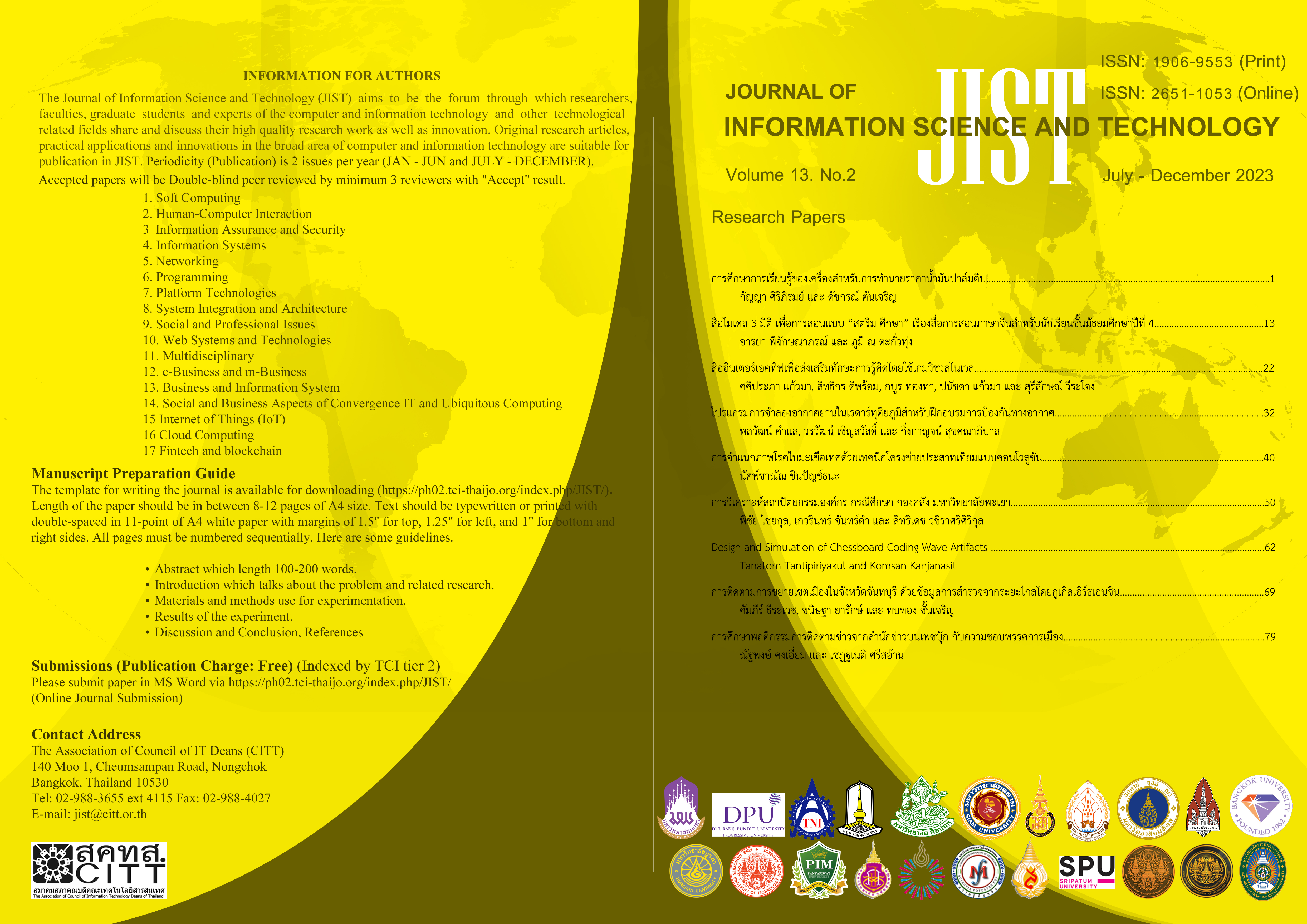Flight Simulator Program in Secondary Surveillance for Air Defense Training
Main Article Content
Abstract
This article presents a program for simulating aircraft in radar airspace for air defense training. The program is specifically designed for close-range and medium-range radar systems, which are crucial in training personnel to detect radar signals without the need for actual aircraft flights. The simulation program can replicate various scenarios, including training exercises with multiple radar systems and realistic situations with a dense number of aircraft. The article introduces an innovation that utilizes the simulation program, generating synthetic radar data from real data collected by FlightRadar24. The program features include: 1) simulating real data collected from FlightRadar24, 2) simulating data with noise synthesis techniques applied to actual data, and 3) generating diverse data using individual flight synthesis and air traffic density synthesis techniques. Experimental results demonstrate that the simulation program can be effectively utilized in real air defense systems.
Article Details
This work is licensed under a Creative Commons Attribution-NonCommercial-NoDerivatives 4.0 International License.
I/we certify that I/we have participated sufficiently in the intellectual content, conception and design of this work or the analysis and interpretation of the data (when applicable), as well as the writing of the manuscript, to take public responsibility for it and have agreed to have my/our name listed as a contributor. I/we believe the manuscript represents valid work. Neither this manuscript nor one with substantially similar content under my/our authorship has been published or is being considered for publication elsewhere, except as described in the covering letter. I/we certify that all the data collected during the study is presented in this manuscript and no data from the study has been or will be published separately. I/we attest that, if requested by the editors, I/we will provide the data/information or will cooperate fully in obtaining and providing the data/information on which the manuscript is based, for examination by the editors or their assignees. Financial interests, direct or indirect, that exist or may be perceived to exist for individual contributors in connection with the content of this paper have been disclosed in the cover letter. Sources of outside support of the project are named in the cover letter.
I/We hereby transfer(s), assign(s), or otherwise convey(s) all copyright ownership, including any and all rights incidental thereto, exclusively to the Journal, in the event that such work is published by the Journal. The Journal shall own the work, including 1) copyright; 2) the right to grant permission to republish the article in whole or in part, with or without fee; 3) the right to produce preprints or reprints and translate into languages other than English for sale or free distribution; and 4) the right to republish the work in a collection of articles in any other mechanical or electronic format.
We give the rights to the corresponding author to make necessary changes as per the request of the journal, do the rest of the correspondence on our behalf and he/she will act as the guarantor for the manuscript on our behalf.
All persons who have made substantial contributions to the work reported in the manuscript, but who are not contributors, are named in the Acknowledgment and have given me/us their written permission to be named. If I/we do not include an Acknowledgment that means I/we have not received substantial contributions from non-contributors and no contributor has been omitted.
References
Hao, J., Wang, X., Yang, S., Gao, H., Yu, C., & Xing, W. (2022). Intelligent Target Design Based on Complex Target Simulation. Applied Sciences, 12(16), 8010.
Wang, S., & Liu, Y. (2020). Modeling and simulation of CGF aerial targets for simulation training. In Proc. Int. Conf. Comput. Intell. Syst. Netw. Remote Control (pp. 1-14).
Yang, P. E. N. G. (2022, April). A study on development of intelligent ground-based air defense radar under the background of modern war. In Journal of Physics: Conference Series (Vol. 2252, No. 1, p. 012068). IOP Publishing.
Jung, Y. H., & Hong, S. M. (2003). Modeling and parameter optimization of agile beam radar tracking. IEEE Transactions on Aerospace and Electronic Systems, 39(1), 13-33.
Behm, A., Borkar, V. R., Carey, M. J., Grover, R., Li, C., Onose, N., ... & Tsotras, V. J. (2011). Asterix: towards a scalable, semistructured data platform for evolving-world models. Distributed and Parallel Databases, 29, 185-216.
EOUROCONTROL: All-purpose structured EUROCONTROL surveillance information exchange (ASTERIX). https://www.eurocontrol.int/asterix (Accesed 11 June 2023).
Eurocontrol, CAT048 - EUROCONTROL Specification for Surveillance Data Exchange ASTERIX Part 4 Category 48 https://www.eurocontrol.int/publication/cat048-eurocontrol-specification-surveillance-data-exchange-asterix-part4 (Accesed 11 June 2023).
Khamsalee, P., Mesawad, P., & Wongsan, R. (2020). Hybrid metamaterial for the secondary radar antenna system. Journal of Electromagnetic Engineering and Science, 20(3), 221-233.
Mumford, R. (2005). EADS supplies radar and weapon coordination systems to the Netherlands. Microwave Journal, 48(5), 147-148.



